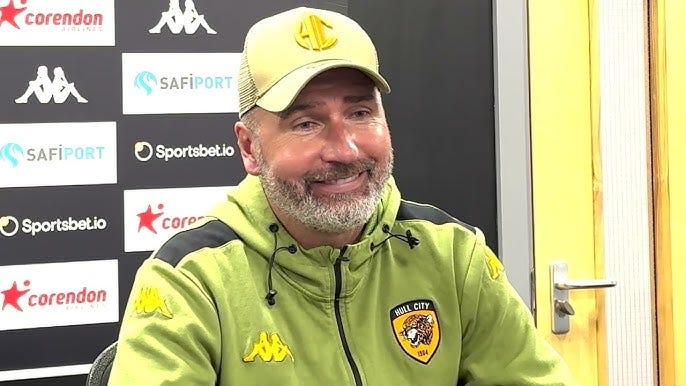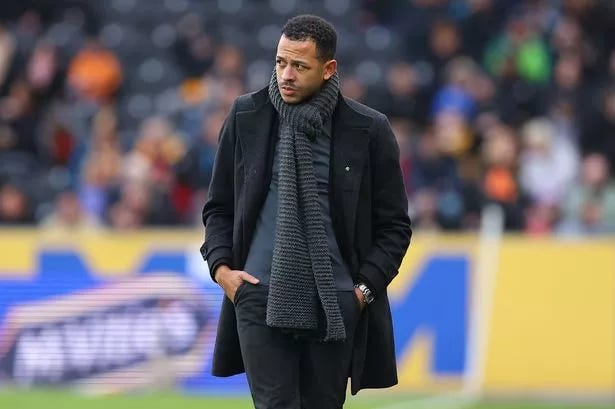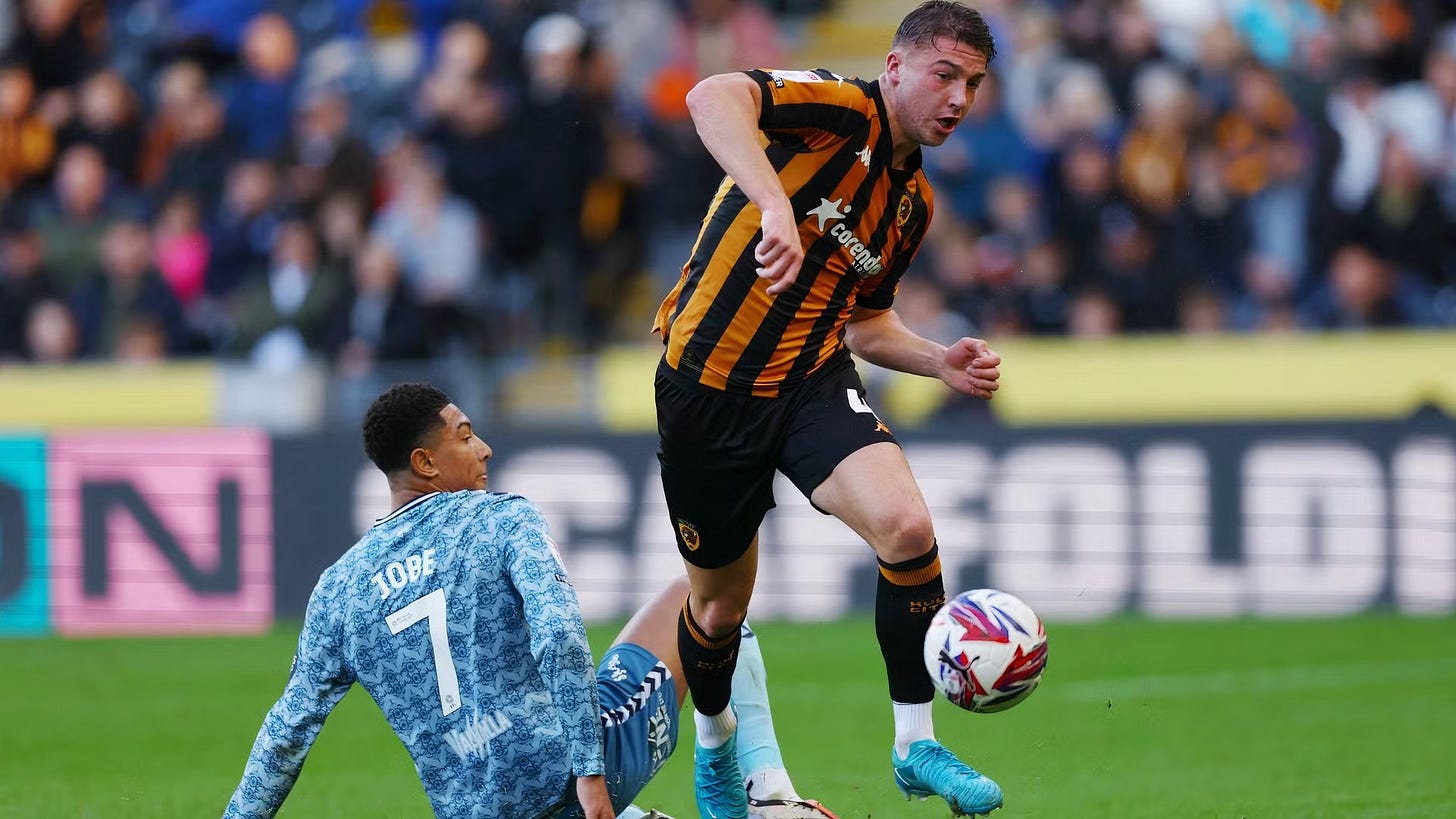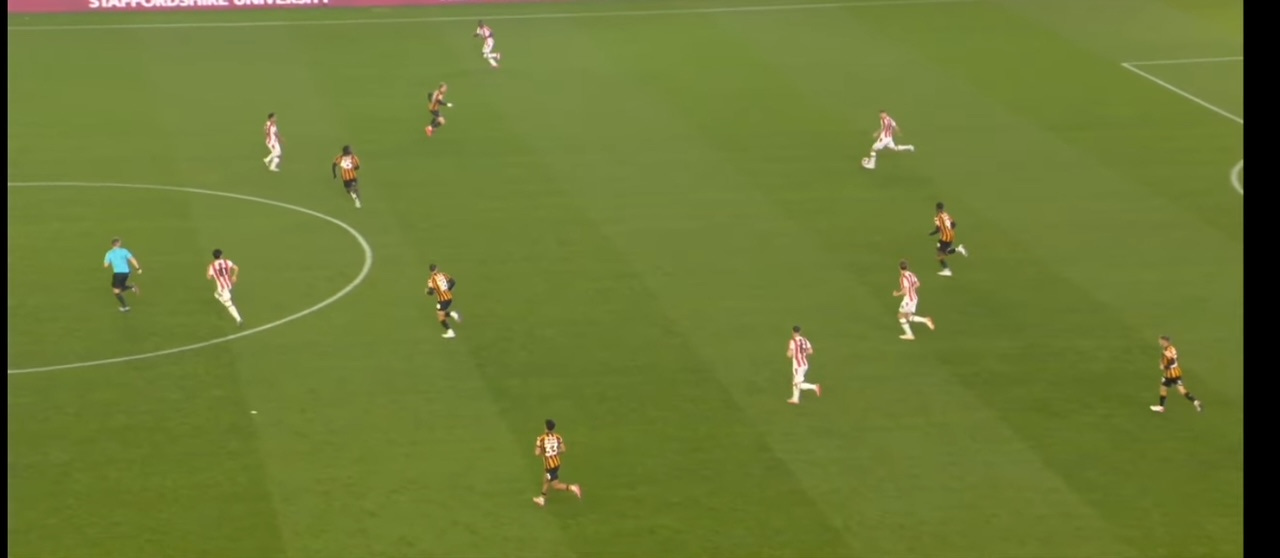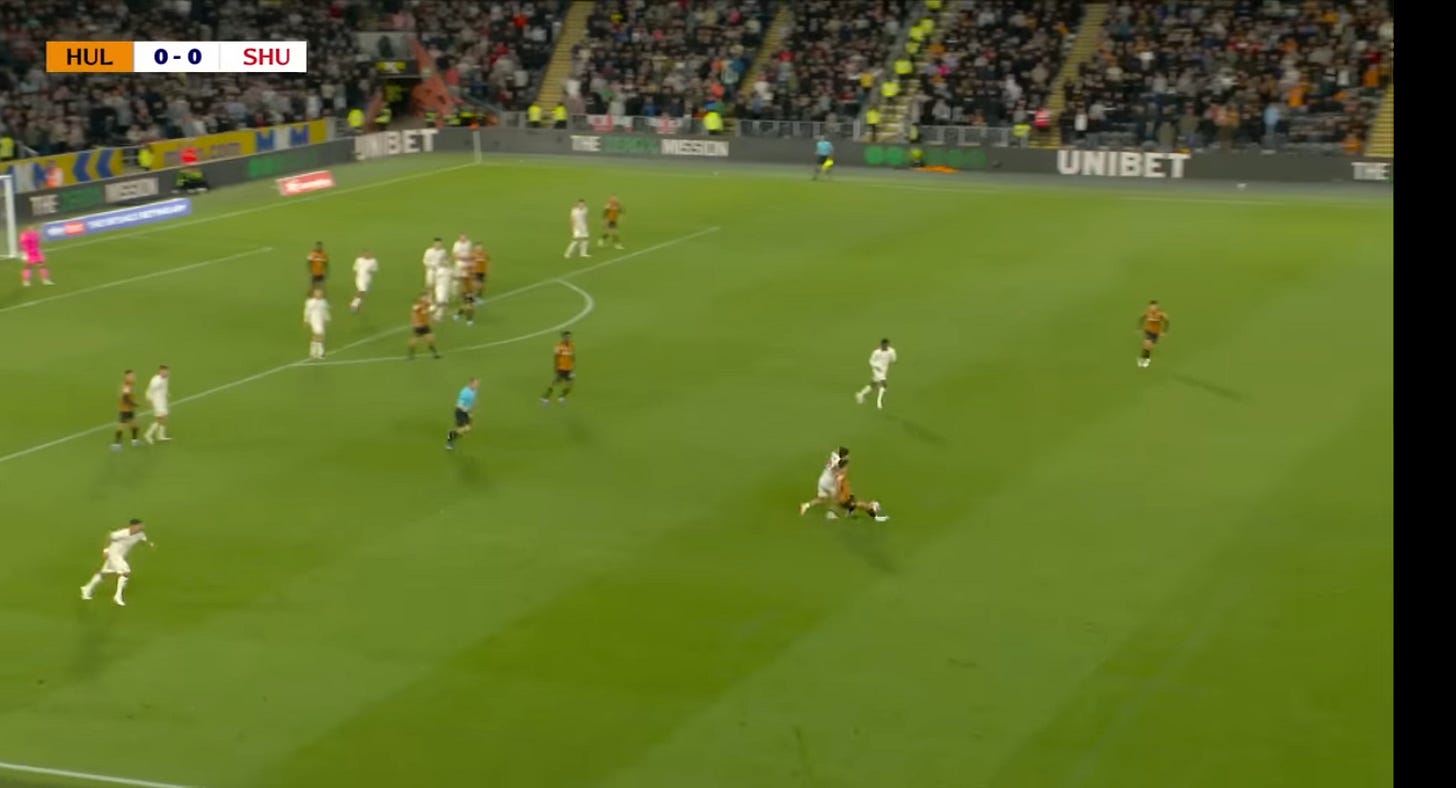12 games of Tim Walter
The swashbuckling style most anticipated is yet to be seen but Hull City are an intriguing watch under their new head coach
Of all the managerial changes in the EFL this summer, Hull City’s was one of the more perplexing. While Liam Rosenior’s spell in charge perhaps didn’t merit the numerous external plaudits, the general perception among fans was that for a first-time boss, he was performing reasonably well. Owner Acun Ilicani had different ideas, replacing him with former Hamburg boss Tim Walter after the Tigers fell just short of the Championship play-offs in May.
Ilicani spent lavishly on wages during the first two years of his ownership and gambled on promotion last term with some eye-catching loan signings, including Fabio Carvalho, Liam Delap and Tyler Morton. When that high-risk strategy failed, the temporary recruits departed, then Jacob Greaves and Jaden Philogene were sold to fend off any potential Financial Fair Play punishment. In total, 17 first-teamers arrived and 14 departed in the summer, bringing in around £10m of net profit.
As well as working with an inferior and less settled squad, the incoming Walter had to meet a specific tactical remit. The reason given for Rosenior’s departure was that Ilicani felt unable to “go to a coach and ask him to play a different way when he has a certain style of football.” In Walter, he found a replacement whose set-up was a far cry from the patient, possession-based approach that went before him. During his stint at Hamburg, a German journalist described the 48-year-old’s philosophy as “heart-attack football”, an assessment he enthusiastically endorsed.
Sacking managers for reasons other than results is a dangerous game; without the honeymoon period of following an unpopular and underperforming predecessor, it is difficult for the next manager to succeed. Last season’s Championship saw the likes of Birmingham City and Millwall make similar switches, only to quickly press the panic button again within a few short months. In Birmingham’s case, CEO Garry Cook’s promise that they would play “no-fear football” under Wayne Rooney, became a taunt by opposition fans throughout his ill-fated tenure.
With 12 league games played, City find themselves down in 16th, a drop of nine places from where they were under Rosenior. There are signs of progress after a rocky start which left them in the relegation zone in late August, but the jury remains out on Walter.
One early feature of Walter’s style was the Tigers’ unique positional rotations within their own third. During the first half against Sheffield United, left-back Ryan Giles regularly swapped positions with left-sided centre-back Sean McLoughlin, inverting inside. The experiment was sensibly shelved after just twenty minutes.
A more consistent aspect of Hull’s build up in those first few weeks was the way in which McLoughlin was asked to sprint forwards immediately after playing a pass. With none of the three midfielders dropping deep to collect the ball from the centre-backs, this created awkward angles for the receiver and left them vulnerable to an aggressive man-to-man press.
One example of this was the first goal the Tigers conceded in the Carabao Cup defeat to Sheffield Wednesday. In the opening minute, McLoughlin knocked the ball to Giles and stepped up. After Giles played a short pass himself, he made a similar move, leaving winger Liam Millar to make a split-second decision whether to knock a risky first-time pass back to goalkeeper Anthony Racioppi or hold onto the ball. His indecision was punished by Wednesday’s Pol Valentin. When the ball was crossed into the box, neither McLoughlin nor Giles were anywhere near striker Charlie McNeill as he finished clinically into the top corner.
These errors set off early alarm bells among some sections of the Hull support. Building an innovative system with Championship players is not an impossible task and there is precedent for it. Marcelo Bielsa’s intense fitness regime at Leeds finally transformed a team which had perenially underachieved. In that same era, Chris Wilder dragged Sheffield United from League One to the Premier League with his creative use of overlapping centre-backs.
However, both of these methods had a purpose. Leeds battled till the end, finishing with a +30 goal difference in the second half of matches in their title winning campaign, compared to just +12 across first halves, meanwhile the overloads created by Wilder’s Blades in wide areas bamboozled opponents. By contrast, Walter’s rotations at the back were more akin to the workings of coach trying to be different for the sake of it.
In recent weeks, form has improved, with 11 points taken from seven games since the beginning of September. The German has made some sensible tweaks, such as bringing Cody Drameh in at left-back. The ex-Leeds man is more defensively-assured than Giles, while possessing enough recovery pace to play in a high line.
Bachir Belloumi’s willingness to carry the ball and shoot from range has added an extra dimension to the attack and Xavier Simons, the deepest of the midfielders, is making himself an option in the first phase of build up more often than before. The introduction of summer signing Charlie Hughes into the backline has shored things up a little. However, the Tigers could make more of his calmness in possession and willingness to dribble the ball out of defence, rather than relying on the risky pass-and-move patterns in their own third.
There have been glimpses of effective pressing and more calculated risk-taking in open play. For the second goal in the 3-1 win at Stoke, Millar leapt out from the left of the 4-4-2 out-of-possession shape to intercept a stray pass, draw in the defender and feed Regan Slater for the finish. With the relentless running of Slater and the soon-to-be-fit Abdulkadir Omur, the Tigers are capable of winning the ball high up the pitch much more regularly than they currently do.
The inability to convert possession into meaningful goal-scoring opportunities is a Rosenior-era conundrum that remains. Although Walter could fairly point to the poorer quality of attacking options within his Hull squad, there are tactical issues too.
With a technically-gifted midfield and wingers clearly being instructed to aim their crosses low, target man Chris Bedia is not being given the correct service. Instead of a physical presence, a more nimble forward with the ability to run in behind opposition backlines and find space in the box to get ahead of centre-backs would be a better fit. The ultimately fruitless pursuit of Tom Cannon suggests that this type of player was on the summer shopping list and finding a striker with similar attributes should be a priority come January.
The most glaring weakness yet to be addressed is Hull’s vulnerability from their own attacking set-pieces. The preference for short corners, without sufficient defensive cover, leaves them open to vulnerable counter-attacks.
Both of Sheffield United’s goals at the MKM came from Tigers’ corners. For the first, Belloumi was caught on the ball, leaving Giles as the furthest man back, despite being stationed 15 yards inside the opposition half. Gus Hamer gratefully pounced on this lapse in concentration and a similar mistake led to Wilson Isidor’s winner for Sunderland a few weeks later.
The irony of Walter’s reign so far is that for all the chaos and excitement promised at the time of his appointment, he has arguably made the Tigers more predictable. Victories have been recorded over second-bottom QPR, managerless Cardiff and a Stoke team in limbo following the controversial sacking of Steven Schumacher. Against promotion favourites Sheffield United and Leeds, City were comprehensively outplayed, while early pace-setters Sunderland also collected three points at the MKM Stadium.
It would be fair to summarise the performance of Walter as slightly below-par, with the attacking rewards not currently justifying the levels of risk being taken at the back. Recent changes suggest that he is willing to adapt, but his fate at will depend on whether he can find solutions to the clear tactical problems that still present themselves.
After arriving in a transitional summer, achieving a mid-table finish while showing clear progression in forward areas would represent a decent return for Walter. This outcome is still very much within his grasp. However, it remains to be seen whether Ilicani has the patience to accept any significant drop-off in league position. His boom-and-bust squad building and the sacking of Rosenior are worrying signs that he may not.


